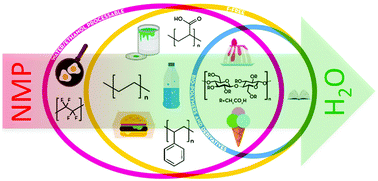当前位置:
X-MOL 学术
›
Energy Environ. Sci.
›
论文详情
Our official English website, www.x-mol.net, welcomes your
feedback! (Note: you will need to create a separate account there.)
Alternative binders for sustainable electrochemical energy storage – the transition to aqueous electrode processing and bio-derived polymers
Energy & Environmental Science ( IF 32.4 ) Pub Date : 2018-10-16 00:00:00 , DOI: 10.1039/c8ee00640g Dominic Bresser 1, 2, 3, 4, 5 , Daniel Buchholz 1, 2, 3, 4, 5 , Arianna Moretti 1, 2, 3, 4, 5 , Alberto Varzi 1, 2, 3, 4, 5 , Stefano Passerini 1, 2, 3, 4, 5
Energy & Environmental Science ( IF 32.4 ) Pub Date : 2018-10-16 00:00:00 , DOI: 10.1039/c8ee00640g Dominic Bresser 1, 2, 3, 4, 5 , Daniel Buchholz 1, 2, 3, 4, 5 , Arianna Moretti 1, 2, 3, 4, 5 , Alberto Varzi 1, 2, 3, 4, 5 , Stefano Passerini 1, 2, 3, 4, 5
Affiliation

|
In this review, we discuss the most recent developments in the field of green binders for batteries and supercapacitors and explain how they could decrease cost and environmental impact, and yet improve the performance of electrochemical energy devices. The different classes of green binders reported to date in the literature are firstly classified according to their processability (the solvent required for electrode manufacturing), chemical composition (F-free), and natural availability (synthetic or bio-derived). The benefits originating from their employment are analysed for different devices. The most popular lithium-ion batteries are thoroughly discussed both from the anode and the cathode side. While high capacity Si-based anodes benefit from enhanced cyclability due to the interaction between the active particles’ surface and the functional groups of, e.g., polysaccharides such as carboxymethyl cellulose and alginate, the transition to water-processable cathodes is certainly more challenging. In particular, strategies to suppress the aluminium corrosion affecting most lithiated transition metal oxides are discussed. Despite the much more limited literature available, the role of the binder is increasingly recognized in the emerging field of lithium–sulphur and sodium-ion batteries, and electrochemical double layer capacitors and, therefore, here discussed as well.
中文翻译:

可持续的电化学能量存储的替代粘合剂–向水电极加工和生物衍生聚合物的过渡
在这篇综述中,我们讨论了用于电池和超级电容器的绿色粘合剂领域中的最新发展,并解释了它们如何能够降低成本和环境影响,并改善电化学能源设备的性能。迄今为止,首先根据文献中可加工性(电极制造所需的溶剂),化学成分(不含F)和自然可得性(合成或生物来源)对绿色粘合剂的不同类别进行分类。对于不同的设备,分析了他们从工作中获得的收益。从阳极和阴极侧都对最流行的锂离子电池进行了全面讨论。例如,诸如羧甲基纤维素和藻酸盐之类的多糖,向水可加工阴极的过渡无疑更具挑战性。特别地,讨论了抑制影响大多数锂化过渡金属氧化物的铝腐蚀的策略。尽管现有文献很少,但在锂硫和钠离子电池以及电化学双层电容器等新兴领域中,粘合剂的作用越来越得到认可,因此,在此也进行了讨论。
更新日期:2018-10-16
中文翻译:

可持续的电化学能量存储的替代粘合剂–向水电极加工和生物衍生聚合物的过渡
在这篇综述中,我们讨论了用于电池和超级电容器的绿色粘合剂领域中的最新发展,并解释了它们如何能够降低成本和环境影响,并改善电化学能源设备的性能。迄今为止,首先根据文献中可加工性(电极制造所需的溶剂),化学成分(不含F)和自然可得性(合成或生物来源)对绿色粘合剂的不同类别进行分类。对于不同的设备,分析了他们从工作中获得的收益。从阳极和阴极侧都对最流行的锂离子电池进行了全面讨论。例如,诸如羧甲基纤维素和藻酸盐之类的多糖,向水可加工阴极的过渡无疑更具挑战性。特别地,讨论了抑制影响大多数锂化过渡金属氧化物的铝腐蚀的策略。尽管现有文献很少,但在锂硫和钠离子电池以及电化学双层电容器等新兴领域中,粘合剂的作用越来越得到认可,因此,在此也进行了讨论。











































 京公网安备 11010802027423号
京公网安备 11010802027423号